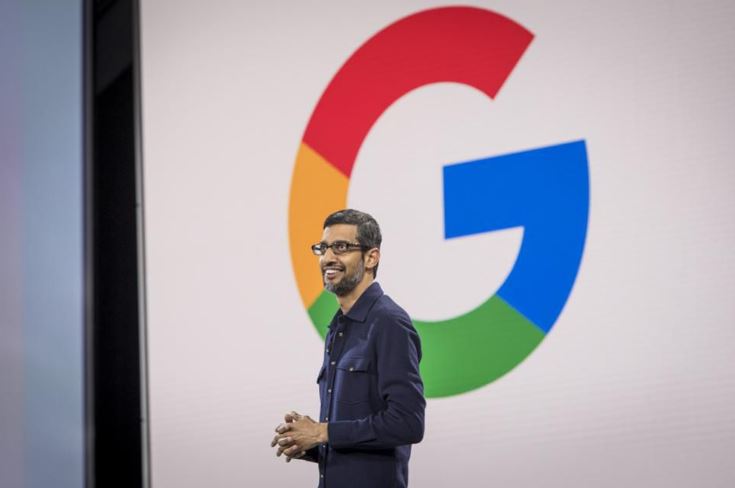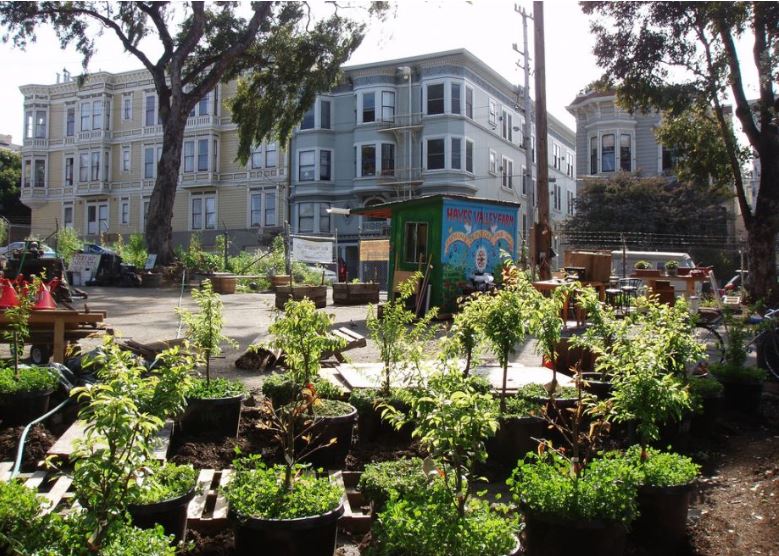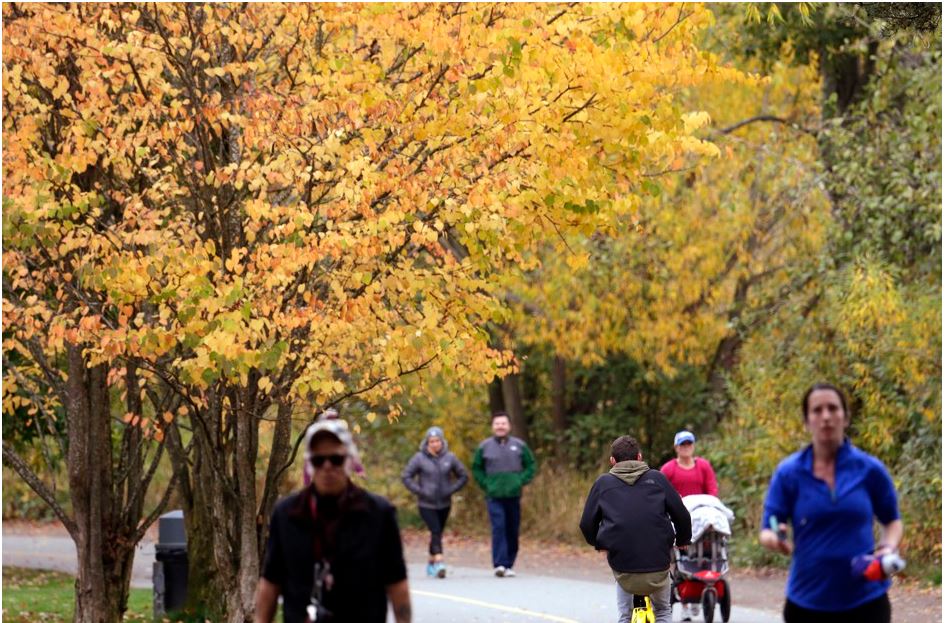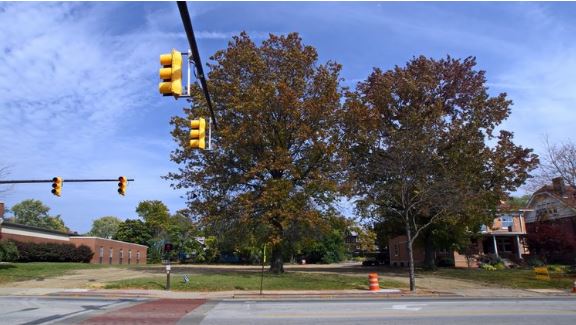 [pdf-embedder url=”https://treefresno.org/wp-content/uploads/2018/12/Kao-et-al.-2018-002.pdf” title=”Kao et al. 2018 (002)”]
[pdf-embedder url=”https://treefresno.org/wp-content/uploads/2018/12/Kao-et-al.-2018-002.pdf” title=”Kao et al. 2018 (002)”]
 [pdf-embedder url=”https://treefresno.org/wp-content/uploads/2018/12/Kao-et-al.-2018-002.pdf” title=”Kao et al. 2018 (002)”]
[pdf-embedder url=”https://treefresno.org/wp-content/uploads/2018/12/Kao-et-al.-2018-002.pdf” title=”Kao et al. 2018 (002)”]

It’s called Project Oxygen.
Beginning in 2008, Google researchers wanted to understand what makes a manager great at Google.
Here’s what they found.
Project Oxygen
Google sought to identify the common threads among Google’s highest performing managers. Based on internal research, Google then applied its findings to its manager development programs.
Over time, Google found that by publicizing and training managers on these central principles, Google experienced improved team outcomes such as turnover, satisfaction and performance.
As Google has grown and evolved, the company also has incorporated employee feedback and refined the central behaviors that make a great manager.
The 10 Behaviors Of A Great Manager
So, here are the 10 behaviors that make a great manager at Google:
YOU MAY ALSO LIKE
1. Is a good coach
Great managers are not simply great performers. They invest the time and energy to coach others.
Great managers share best practices so that their teams can grow.
2. Empowers team and does not micromanage
It’s all about empowerment.
What are you doing to empower others on your team and across the organization?
Micromanagement is one of the great blunders of poor managers. Give your team space. Be flexible. Sometimes, you just need to get out of their way. No one likes a micromanager.
3. Creates an inclusive team environment, showing concern for success and well-being
Be inclusive. Embrace your team and make them part of the mission. Create an environment where anyone can ask a question, experiment and propose a new idea.
4. Is productive and results-oriented
Results matter, but you need to create a culture in which everyone can thrive to produce the desired results.
Show your team how to produce the results that you want. Don’t just set goals and then expect outcomes.
5. Is a good communicator — listens and shares information
Too many managers fail because they can’t communicate.
Communication is not top-down or unidirectional. It’s essential to be a good listener. Invest the time to get in the arena and listen to your team.
6. Supports career development and discusses performance
Don’t focus on what your team can do for you. Focus on what you can do for them – and how you can work with them to advance the goals and mission of the organization.
Career development is essential – give your team the tools they need to thrive.
Feedback (positive and constructive) is so important – make sure to get it right.
7. Has a clear vision/strategy for the team
If the manager doesn’t have a clear vision and strategy, how can the team thrive?
It starts with the manager to set the tone and lay the foundation and direction for the team.
8. Has key technical skills to help advise the team
Substance matters.
Managers don’t “check out” when they become managers. Rather, they get in the weeds.
Not only can you help achieve better outcomes, but also you can gain credibility with your team when you demonstrate your technical expertise.
9. Collaborates across Google
Your team is not an island.
You must collaborate across the organization. You have expertise that someone in another group can use. They too have skills that can benefit you.
The more everyone shares, the more the organization rises.
Collaboration leads to wonderful synergies.
10. Is a strong decision maker
Analysis is helpful. Strategy is important. Scenario testing provides focus.
However, there is no replacement for being a strong decision maker.
You can spend unlimited time analyzing, strategizing and scenario-testing.
It’s the action that matters.
These 10 behaviors make a great manager at Google. What makes a great manager in your organization?
Zack Friedman is Founder & CEO of Make Lemonade, a personal finance comparison site. Follow Zack on Twitter and Facebook. Read his Forbes columns. Contact Zack for speaking engagements.

Facebook
Twitter
Email
Food Forest Movement Finds Fertile Ground in the Midwest
BY RACHEL DOVEY | AUGUST 27, 2018
Facebook
Twitter
Email
The Freeway Food Forest in San Francisco. (Credit: Zoey Kroll)
As others are doing in Seattle and Philadelphia, the small city of Davenport is addressing local food insecurity with a regenerative, seven-layer garden, known as a “food forest.”
RELATED STORIES
Dollar Amount Put on Cost of Blight to Neighbors
To Support Entrepreneurs, Charlotte’s Starting With Questions
Detroiter Plans a Grocery Store That’s a Neighborhood “Beacon”
Detroit Searches for Equity in Rising Restaurant Scene
The Quad City Food Forest uses permaculture techniques to create a layered “guild” system — i.e., a group of plants that help each flourish. The layers include “root, mushroom and shallow-rooted foods at the base of the garden, followed by vining varieties, ground covers and herbs,” according to the Quad-City Times. Next, there’s a flowering- and fruiting-shrub layer, then a low-tree layer and finally a full fruit- and nut-tree layer.
According to the paper, the food is available to the community for free.
“Volunteers take food home on a weekly basis, and anything that is left over, we will take to several local shelters and food pantries,” food forest president Conza Borders recently told the paper.
As Next City has covered, closed-loop agriculture is increasingly being used by cities to address hunger, food deserts and even mental health. The food forest model is particularly effective for low-income families because many community gardens require money for membership dues, seeds and tools. Food forests are designed to regenerate, with volunteers sharing seed-saving methods and planting native perennials that boost harvests year after year. They also tend to have an open-door policy.
“Anyone can come at any time of day and take whatever they want,” Michael Muehlbauer, the agricultural engineer and orchardist behind the Fair Amount Food Forest, told Next City earlier this year.
In Philadelphia, agriculturists want to borrow an idea from Seattle and use public land to create food forests. Their proposal wouldn’t just address food insecurity, but create a “different model for the civic commons,” Muehlbauer told Next City.
“Humanity used to have more of these spaces, for collectively growing food for each other and sharing it, and this is just trying to bring that back a little bit,” he said.

Carbon Offsets for Urban Trees Are on the Horizon
MARIA DOLAN AUG 28, 2018
Austin, Texas, and King County, Washington, are testing carbon credits for planting and protecting urban trees.
SHARE
TWEET
The evidence is in: Urban trees improve air and water quality, reduce energy costs, and improve human health, even as they offer the benefit of storing carbon. And in cities across the country, they are disappearing.
A recent paper by two U.S. Forest Service scientists reported that metropolitan areas in the U.S. are losing about 36 million trees each year. The paper, by David Nowak and Eric Greenfield, was an expansion of the same researchers’ 2012 study that found significant tree loss in 17 out of the 20 U.S. cities studied.
This arboreal decline is happening even in some areas that promote “million-tree” campaigns, Arbor Day plantings, and street-tree giveaways. Cash-strapped municipalities just can’t find enough green to maintain the green. Additionally, many cities are adjusting to population booms, and to temperature increases and drought due to climate change—both conditions that can be hard on trees (while increasing their value as sources of cooling and cleaner air). There’s also a growing recognition of the inequity of tree-canopy distribution in many cities, with lush cover in wealthy neighborhoods and far fewer trees in disadvantaged areas.
To find more funding for urban trees, some local governments, including Austin, Texas and King County, Washington (where Seattle is located), are running pilot projects with a Seattle-based nonprofit called City Forest Credits (CFC). The nonprofit is developing a new approach: generating funding for city tree canopies from private companies (and individuals) that wish to offset their carbon emissions by buying credits for tree planting or preservation.
The vast majority of forest carbon credits worldwide have been issued for trees in tropical rainforests and other forests far from urban areas. A study released last year of the forest offsets in California’s cap-and-trade program found that they are effective at reducing emissions.
A view of the Garcia River Forest near Longvale, California. Owned by the nonprofit Conservation Fund, the forest provides carbon credits to private companies and public entities seeking to offset their emissions. (Peter Henderson/Reuters)
The new credits aim to quantify not only the carbon benefits of urban trees, but also rainfall interception, energy savings from cooling and heating effects, and air-quality benefits. CFC has no role in marketing or selling credits for specific projects, but maintains the standards (protocols) and credentialing for other organizations that sell them. A third-party firm, Ecofor, verifies compliance for tree-preservation projects. Tree-planting projects are either third-party verified, or, for smaller projects that cannot afford that, verified by CFC with peer review, using Google Earth and geocoded photos.
To be eligible for the credits, city tree projects must follow protocols created specifically for urban forests—rules governing such specifics as the location and duration of a project and how the carbon will be quantified.
The new credits “are specifically catered to the urban environment and the unique challenges and possibilities there, so they differ from traditional carbon credits,” said Ian Leahy, director of urban forestry programs at the non-profit conservation group American Forests, and a member of the CFC protocol board.
“I think the work is innovative and potentially game-changing,” said Zach Baumer, climate program manager for the City of Austin. (Baumer also serves on the protocol board for CFC.) “To harness the market to create environmental benefits in cities is a great thing.”
Austin
The City of Austin aims to be carbon neutral in government operations by 2020. To get there, it has been reducing emissions through energy efficiency, renewable energy, alternative fuels, and hybrid and electric vehicles. But the city will still need offsets to claim neutrality.
If governments and businesses choose to purchase these credits, they could help fill that gap, and they can keep their dollars local. Austin is running two pilot projects this year with CFC: a riparian reforestation project near a creek and a tree-planting project on school-district land. The City of Austin is purchasing the credits for both projects from the nonprofit TreeFolks, via CFC.
Recommended
Cooling Dallas’s Concrete Jungle
LINDA POON
AUG 20, 2018
The leaves on trees frame a woman who stands at the fence around the reservoir in Central Park in New York City.
How Should We Pay for Street Trees?
TERESA MATHEW
OCT 3, 2017
What Are Trees Worth to Cities?
LAURA BLISS
APR 21, 2016
The fact that credits can cover both stream-side plantings and trees on school property illustrates the complex task of developing a city credit—the protocols and quantification methods must work for the disparate tree species and stewardship strategies of an urban forest, in contrast to the more controlled setting of an industrial plantation.
CFC is eager to road-test the protocols in Austin, said its founder and executive director, Mark McPherson, a Seattle lawyer and businessperson who has dedicated pro bono hours throughout his career to city tree issues. “Even though you have a national drafting group that put the protocols together, that brings together lots of expertise, they’re still cooked in the lab, if you will,” he said. “They have to be tested in the real world.” The effort is being helped by McPherson’s older brother, E. Greg McPherson, a prominent scientist in the field of urban forestry who helped develop the protocols.
King County
Another piece of the puzzle is a pilot project in King County, where a new land conservation initiative (LCI) targets protection of 65,000 acres, spanning urban areas to farmland. “We really want to maintain this intact landscape—what I’d call our natural infrastructure—that is the foundation of the quality of life we have here,” said Charlie Governali, the land conservation projects manager at King County’s Department of Natural Resources & Parks.
King County has been working with CFC over the last year, piloting a carbon program to help protect about 1,500 acres of currently unprotected and threatened tree canopy in and around urban communities. The county will consider expansion to a full-blown program by the end of 2018. Governali said there are already businesses interested in buying credits.
One of the first commitments made through CFC is a planting project on a rare parcel of open space in the City of Shoreline, just north of Seattle, funded by Bank of America through American Forests.
According to a study by the nonprofit Forest Trends, in 2016, $662 million globally went toward the purchase of carbon offsets for the protection or restoration of forests and other natural landscapes. The usual model is that for-profit carbon project developers work with landowners to qualify large forests for credits. Doubters have questioned whether city trees offer enough scale to be worthwhile, McPherson noted. “Carbon developers are thinking they want to lock up 10,000 acres of forest land, so they don’t see the scale or the volume in what we’re doing.”
But Governali said that for King County, the carbon protocol offers something different—a way to protect a lot of urban green space cumulatively by selling credits over time, and for many small green spaces.
“Compared to one additional tree left standing in a far-off industrial forest, each additional urban tree we protect has an outsized human impact.”
Urban credits will be expensive—many times what a commodity credit for carbon might cost. Urban land is not cheap, and urban trees are costly to plant and maintain compared to those on forest land.
However, urban trees offer more public benefits. “Compared to one additional tree left standing in a far-off industrial forest, each additional urban tree we protect has an outsized human impact,” argued Governali, because these trees bring cooling on hot days, better air quality, and even improved mental health. Finally, he noted, the sale of carbon credits from urban trees can help a municipality buy the underlying land and make it a public park, “a place for families to gather, relieve stress, get some exercise, relax, and for children to play and learn.”
At the outset, the work adds to already full urban-forest workloads and stretches budgets, at least until credit revenue from buyers can support the programs. “We’re good at planting trees, but documenting the work to create an official carbon credit is new for us,” said Austin’s Baumer. However, generating credits is one more way to stall or reverse tree loss at a time when people are just starting to understand how critical trees—whether elms, oaks, Douglas firs, or cedars—are to a city’s health and economy.
About the Author
Maria Dolan
@
MARIAIDOLAN
FEED
Maria Dolan is a Seattle science and environment journalist who has written for Smithsonian, Slate, Seattle magazine, and other publications.

Why Street Trees are so Essential for our Cities
Posted in Akron, Dorwart, Top Story
and
Jun 12, 2018
Street trees are often taken for granted and overlooked. But in Akron, Ohio, they’re a mainstay of the urban landscape. Named a 2015 Tree City USA by the Arbor Day Foundation, Akron received the designation due to its commitment to urban forest management, led in part by City Arborist Bill Hahn.
In 2015 alone, the city planted over 2,000 trees and over 3,000 seedlings, in addition to pruning nearly 3,500. And every Arbor Day in Akron, thousands of saplings are distributed to locals by nonprofits and even MadTree Brewing Company (living up to its name).
In fact, the city of Akron, Ohio, is home to over 55,000 street trees. And if you want to know where to find the very best ones, just ask Leah Heiser, the Flowerscape director at the 37-year-old organization Keep Akron Beautiful—a nonprofit whose mission, Heiser says, is “to enhance the quality of lives in Akron through beautification, conservation education, and removing litter and graffiti.” Through the Flowerscape program, Heiser manages and cares for 32 public gardens throughout Akron.
Street trees aren’t just attractive, they also provide a myriad of benefits for our neighborhoods and cities.
Her favorites are the variety of trees in Alexander Park, the 60-year-old maple tree on West Market Street near the Keep Akron Beautiful office, and the London planetrees on High Street across from the Akron municipal building. London planetrees, Heiser says, are ideal and commonly used for city streets: “It looks exactly like a sycamore tree,” she explains, “but requires half as much water, and it’s extremely sturdy.”
To some, street trees might seem like an attractive but ultimately unnecessary urban feature. When we walk our streets, many of us—especially those of us lucky enough to live in places splashed with green and lined with flowers—probably take urban trees as a given. Whether they hang over our heads as we bike along the sidewalks or line the edges of pocket parks, trees aren’t usually given much attention or respect.
But ample research indicates that that’s a mistake, as Sarah Kobos wrote last year in “The Magic of Tree-Lined Streets.” Street trees provide plenty of pragmatic benefits in terms of urban planning and environmental wellness, such as shade from heat and relief from humidity, making streets more walkable and bikable and lowering the average electricity bills of surrounding households. They also lower the average driving speed, making roadways safer for pedestrians and drivers alike. There’s even evidence that they improve the health of nearby residents, lower crime rates, and drastically increase property values in an area.
Heiser adds that street trees are essential to a city’s environmental health. They improve air quality and decrease the circulation of greenhouse gases like carbon dioxide and ozone. “They’re extremely important,” she says of urban trees. “They help beautify the city, help reduce urban heat, help reduce stormwater runoff, clean the air, all those really wonderful functions.”
Horticultural variety, says Heiser, is essential to ensure when selecting trees for urban streets. “You want to stay away from monoculture and promote variety in order to prevent infestations,” she explains. And though this factor isn’t as essential to her personally, she notes that cities generally look for low maintenance trees that don’t require much water or consistent upkeep.
Tree selection also has to be based on the specifics of a particular urban environment. “My overall goal,” Heiser says, “is creating healthy ecosystems that have longevity, rather than instant gratification. I’m focused on creating multifunctional green spaces that are not only beautiful for the community, but also serve as wildlife habitats and food sources for local wildlife.” When planning tree planting in Akron, Heiser looks for gingkos, pears, birches, white pin oaks, river birches, and “native trees that support local wildlife. They grow so well in our environment, without a lot of leaf litter.”
As for Heiser’s plans for the landscaping in Akron, she hopes to add more trees to the Flowerscape sites and to increase the overall variety of trees Akron has to offer. “We want to create more fluidity in our green spaces in the downtown area,” she explains, adding: “We have lots of pocket parks, but we need more of them, and more connectedness between them.”
For Heiser, the value of trees and green spaces in urban environments goes beyond pragmatics into a philosophy of life and the rich history of the city of Akron. “Our history is based off of the canal, and we have a really cool opportunity to beautify the canal area and to link our history to our present through a green space.”
Moreover, incorporating trees into the urban environment, Heiser argues, fosters a greater respect for nature and stirs our innate instincts to connect with it. “We don’t spend a lot of time in nature anymore, so it’s hard to reconnect with it, and we don’t always know how,” she says. “We have a chance to foster that natural respect with interactive green spaces.” The humble street tree presents an opportunity to do just that.
(All photos courtesy of Leah Heiser)
Related
The Magic of Tree-Lined Streets
Whether you care about the environment, property values, public health, or your city’s bottom line, you can make your town stronger by planting trees.
Oct 30, 2017
Planting the Seed for an Urban Forest
John Thomas is a Strong Towns member who believes trees are a vital part of any urban landscape and he’s been working to get his town of Iowa City to plant more of them.
Mar 2, 2017
Laura Dorwart
Laura Dorwart has written for The New York Times, SheKnows, Bustle, Bitch, VICE, Catapult, McSweeney’s, and HuffPost, among other outlets. She has an MFA in creative nonfiction from Antioch University and was a Fletcher B. Jones Dissertation Fellow at UC San Diego. She lives in Ohio.
This essay is part of an ongoing engagement with Akron, Ohio, supported by the Knight Foundation. Learn more about it here.